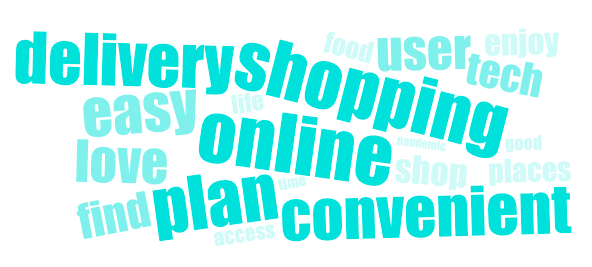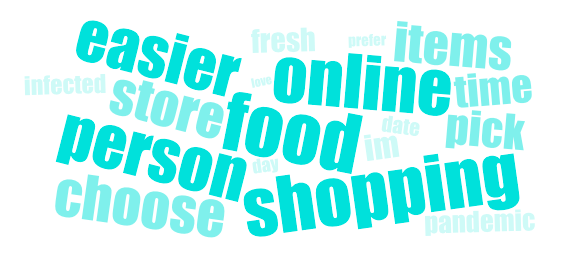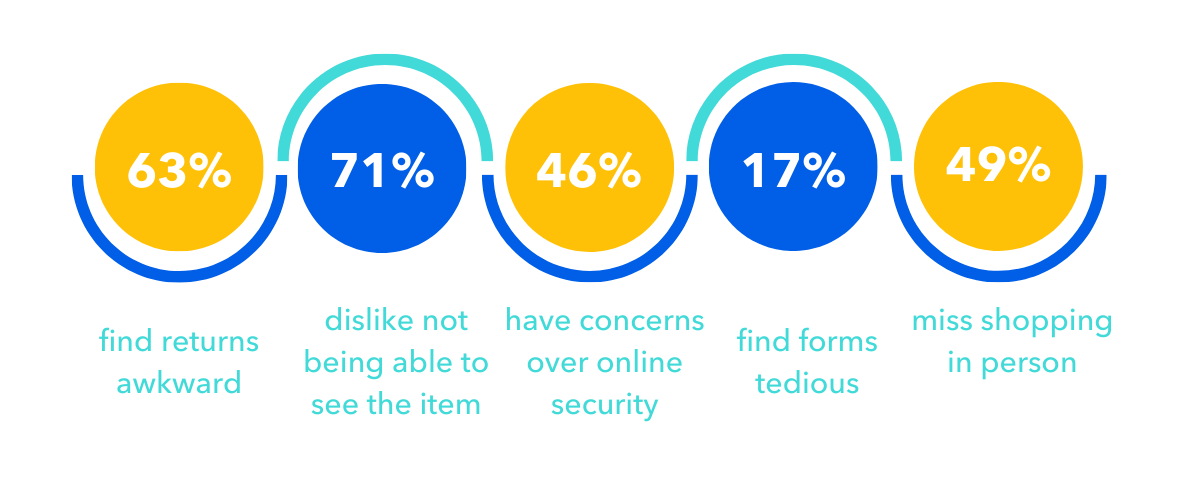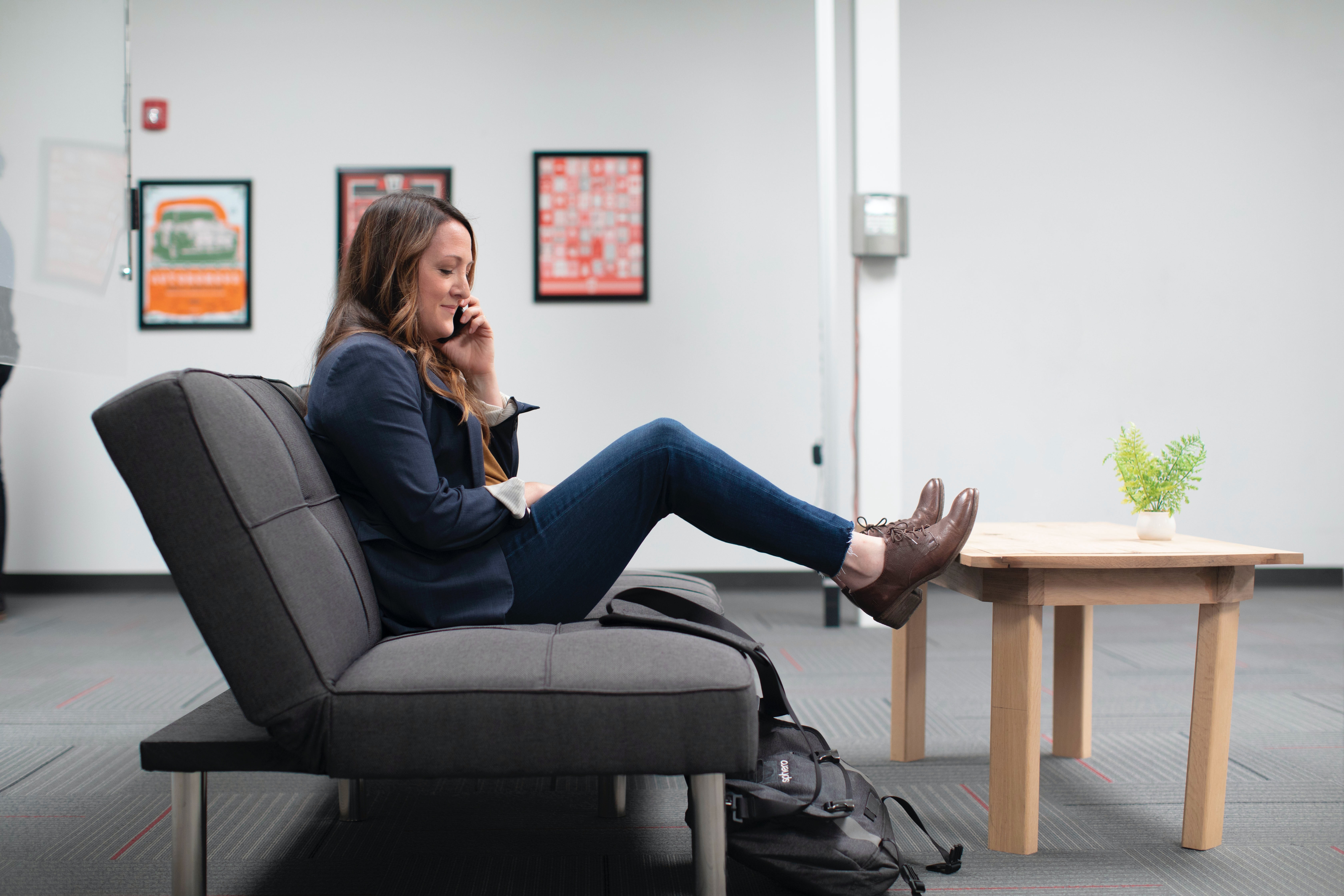The last 18 months have seen a digital revolution that provided community and connectivity in isolating times. Covid accelerated the shift towards online shopping and has changed the way consumers use e-commerce and digital solutions. When 85% of our global market research communities think online shopping is the future, the importance of smooth customer experience cannot be overstated.
But when consumers are so reliant on online shopping for their every need, brands need to perfect their user journeys and customer experience. And what better way to achieve this by collaborating with the customer? According to Forbes, “84% of companies that work to improve their customer experience report an increase in their revenue” – so why not optimise your CX to ensure satisfied customers and maximum return for your business?
We asked our global insight community if they feel satisfied with the customer experiences they’re seeing from the brands they engage with – or if, in a world full of more and more digital touchpoints with brands, they feel they’re being sold short when it comes to CX. Here’s what they had to say…

Online shopping vs in-store
Our consumer poll suggested that 90% enjoy online shopping, 88% find it easier than the alternative, and 73% intend to shop online even now stores are reopening. Despite the high street’s need for increased footfall post-lockdown, consumers in the age of convenience are married to their ‘click of a button’ shopping.
In fact, 68% feel customer experience online is ‘easy’, suggesting the majority are satisfied with their user journeys and digital experience. A significant majority (78%) even said the technological revolution has made life better and easier.

“I don't need to visit the bank so often because I can do many transactions online by myself. In my house I have a smart alarm and a CCTV camera… It generally makes life easier."
Bulbshare User, Male, 55, UK
But what are they shopping for?
When it comes to furniture shopping, as opposed to clothes or food, 61% are happy to do it online – whereas 39% prefer to see the items before purchasing.
This theme of assessing the item in real life was prevalent, with 59% of our focus groups still preferring grocery shopping in supermarkets instead of online, stating that seeing the freshness of the item helps them decide on a purchase. Many referenced the frustration of online substitutions, but others enjoyed the ability to shop at obscure times even when stores are closed. Online grocery shopping allowed them to fit their food order into their routine, rather than moulding their routine to fit opening times. To learn more about grocery shopping, read our post-covid food trends blog.

“I am very particular about my food I like to be able to see my food in person before I purchase.”
Bulbshare User, Female, 34, UK
“I prefer online as it’s convenient and I can do this any time.”
Bulbshare User, Male, 42, UK
The convenience age
80% described online as ‘convenient’ and 54% said quick delivery – as well as not having to carry items (66%) – aided purchasing. 51% said there are better discounts and 54% said there is more range. Similarly, 54% said it is safer during these uncertain times.

“I never have a bad experience with online shopping because I always order from the same sites because I know and love their quality of service.”
Bulbshare User, Female, 22, France
“I like buying online because there are reviews to check and promotions and deals. But I do like to see things live and in-person too.”
Bulbshare User, Female, 26, Mexico
The downfalls of digital
However, 63% of our consumer poll said that returns and refunds were an awkward process, especially when 71% felt not being able to see the item in person disadvantaged them. 46% also had concerns about scams or being hacked, with 32% reluctant to give out so much personal information and 17% thinking all the forms were tedious and time consuming. 12% said online shopping is less fun, 49% miss shopping in person and 44% have nostalgia for the days before delivery. Moreover, 24% find delivery inconvenient.

“I believe that the use of technology limits us and makes us forget about the real world.”
Bulbshare User, Female, 23, Poland
“A bad experience while shopping online is when an item purchased and received is different from the item seen in the advertisement.”
Bulbshare User, Male, 25, Malaysia
Benefits of in-person shopping
Meanwhile, 66% of shoppers surveyed enjoy finding new and unexpected items when shopping in-store, with 39% appreciating help from staff, 78% grateful to see the item in detail, and 54% making it into a fun day out. However, the variety of items (49%), parking (56%), social distancing (61%), the effort of travelling there (56%), and carrying items (73%) were all concerns.
“It’s good when the one store has everything you need. I like shopping with a friend or letting my daughter use their birthday/Christmas money. letting them pay at the till themselves also helps them gain confidence and understand the cost of items and adding up money.”
Bulbshare User, Female, 32, UK
‘Your call is important to us’
There was a 68% negative sentiment when asked about calling up companies, with the phrase ‘long time’ coming up the most in the anecdotes submitted. 32% find it tedious and time consuming to wait on the phone when calling brands and 24% avoid calling companies altogether. However, 29% felt it was better to talk to a human than a chatbot or look at FAQs.

“No, I don’t enjoy it. They keep you on hold for too long. Then after that, you’re asked too many questions.”
Bulshare User, Male, 55, UK
Post-Covid digitalisation
46% felt that customer experience was better since Covid – and 44% felt it was unchanged. When consumers are so dependent on digital solutions to make life safer, easier, and more connected during lockdown, it’s never been more important to streamline your customer experience.
Brands getting it right
H&M, ASDA, Select, Poundshop, Amazon, PayPal, Tesco, Wilkinsons, Etsy, ASOS, PLT, eBay were all listed as brands with easy websites or apps to navigate. Amazon was the most cited brand for good customer experience and service.
“Amazon definitely made my life so much easier throughout the pandemic.”
Bulbshare User, Female, 50, US

Brands getting it wrong
Despite general positivity around customer experience, there were still brands failing their consumers. The frustrations came from being sent the wrong item – which is a problem avoided when shopping in-person – or by receiving faulty items that either didn’t resemble the photo or were poorly made. Consumers also complained of bad customer service and websites that were hard to navigate.
“Bad experiences I've had would be not getting the items I've ordered, for example: wrong product/wrong size. With my online food shopping sometimes the items aren't available and they send alternatives that I don't want."
Bulbshare User, Female, 32, UK
“Besides fraud, hacking, phishing or having to provide too much personal information, my experience with online shopping remains mostly positive.”
Bulbshare User, Male, 35, US
Is online the future?
For our UK, Australian, and American consumer panel, 83% stated that online shopping is the future. Similarly, 90% of our Malaysian market research community agreed, with 85% of the Mexican community, 80% of the French community, 88% of the Italian community and an overwhelming 98% of Polish respondents saying the same.
“Using Zoom and Microsoft Teams has really helped me to feel in touch with my work colleagues. Being able to share my screen has been beneficial when training or assisting with queries. Skype and Zoom helped me to have quality time with family members and friends during lockdowns.”
Bulbshare User, Female, 43, UK
“Many things can be done from home ... It is much faster and it saves a lot of time.”
Bulbshare User, Female, 44, Italy
Brand toolkit:
- Ask the consumer. In order to excel with your CX, start at the first step. Ask your customers what they’re looking for from you. By developing a customer community with active, always-on respondents, you can access ready-to-go insight that will help you sculpt the user experience.
- Test user journeys with customers. Customer feedback is key. Once you’ve established your site, regularly check in with those using it to see it from their perspective. Set up a workshop to guide them through every page and step, and give them an opportunity to provide honest feedback at every stage of the conversation.
- Run at-scale tests. Consumer workshops are a great way of accessing in-depth information, qualitative insight, and unfiltered feedback. However, you can also opt for large scale surveys with your audience. Using Bulbshare technology, you can ask hundreds of users to evaluate your website, app, or service to get the bigger picture. Ask them how they rate your reachability, accessibility, flexibility, simplicity, convenience and personalisation, and let them use heat mapping and image highlighting to illustrate their responses.
- Optimise for both mobile and laptop. Users stop engaging if a website doesn’t translate well to their mobile device. 80% of our panel felt disengaged when a website didn’t load or work on their phone – which is even more significant when you know that most users are tuned in via their phone, not their laptop. The mobile-first mindset is something you must bear in mind when crafting your user experience.
- Talk to the consumer. Staying in contact with your users is essential – be it through customer communities or through digital chatbots. Consumers want to feel attended to and listened to, and by providing quick AI responses through chatbots and opportunities for real conversation through online communities, you can drive customer engagement and loyalty.
Our community is a general population sample made up of 311 participants. The sample is divided into 21.8% UK participants, 15% US participants, 4.9% Canadian participants, 6.1% Italian participants, 7.6% Polish participants, 4.9% Mexican participants, 11.2% Malaysian participants, 6.6% French participants, 11.1% Australian participants, and 1.5% Saudi Arabian participants. The panel is 56.1% female, 37.6% male and 4.8% non-binary or other. 11.5% are 16-25, 34.7% are 26-35, 42% are 36-50, and 10.5% are 51+.
